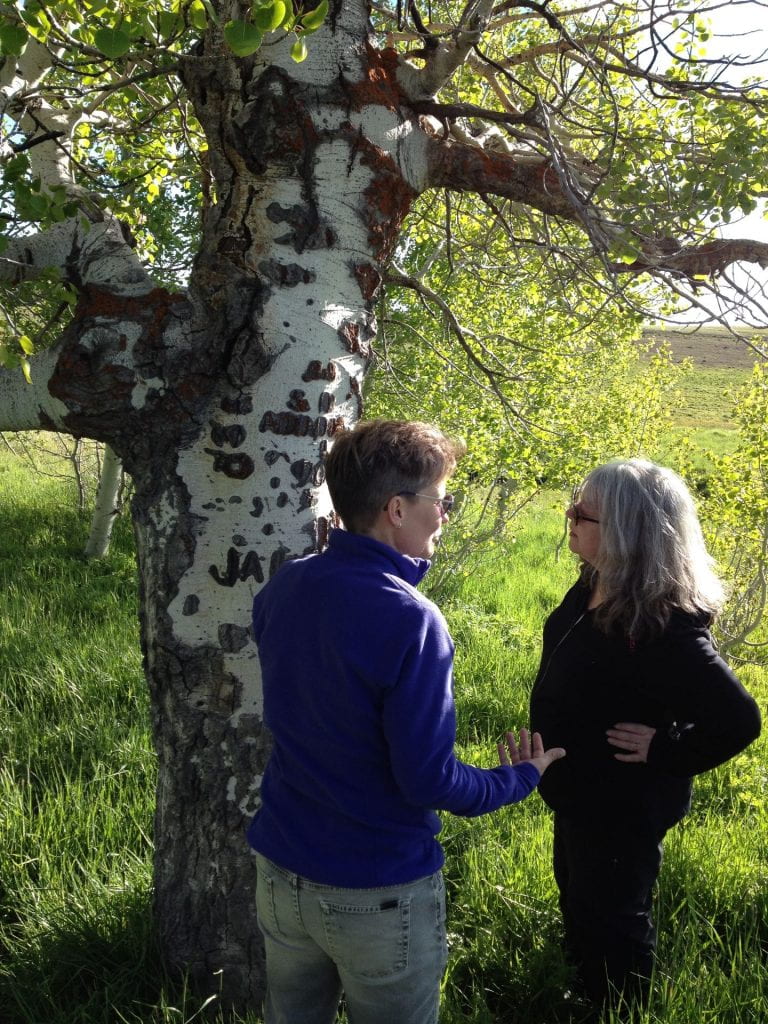The University of Oregon’s Center for Environmental Futures teams up with the Penn Program in Environmental Humanities’ Data Refuge project at the University of Pennsylvania to offer Data Storytelling from the Pacific Northwest. Center co-directors Stephanie LeMenager and Marsha Weisiger have been traveling the backroads and interstates of Oregon since September 2017, asking Oregonians to tell us how they understand and experience Oregon’s public lands. We’ve been in the good company of University of Oregon historians, literature scholars, biologists, geographers, sociologists, and pedagogy specialists—faculty and graduate students who’ve participated in our traveling Field School and offered their own expertise about how knowledge of the land and its histories comes into being, and, in turn, how such knowledge takes the form of stories. So far our team has completed fifty-one oral histories. Each oral history is a story about our subjects’ coming to know places—i.e. public lands—that have radically shaped their lives. As we collect this narrative data, we learn how ranchers, farmers, federal land managers, environmentalists, Indigenous communities and others understand what “wildlands” are, how public lands should be managed, how such lands are affected by changes in climate, and how they ought to figure as we move into the future. The title of this oral history project is “What Are Oregon’s Public Lands?”

Photo credit: Nate Otjen.
The arborglyphs shown in this photograph may record the history of Basque herders in southwestern Oregon, a history largely unwritten except for the names, dates, and often erotic drawings found in secluded stands of aspen trees throughout southwest Oregon and in parts of Nevada and California. We present this image as a key to our project because it exemplifies how data are not always aligned for our consumption and use, as standing reserve (we nod to Heidegger) for our interpretation. Data are written into the land itself, through centuries and indeed millennia of ecological management practices, through intimate interspecies encounters, from the traditional ecological knowledges of indigenous nations and immigrant herders to the Euro-western sciences of US federal agencies. The data storytelling about our public lands that we engage at the University of Oregon begins in explorations of regional landscapes and oral histories. Typically, what is collected is narrative and accidental poetry, the inadvertent data of experts whose expertise often goes unrecognized or under-appreciated, as “tradition.” The scientific knowledges of federal and state managers make an exception to this characterization, although in some cases these managers are deeply embedded in local communities to the extent of repurposing the data of university science through the eyes of ranchers and agricultural practitioners, both settler and Indigenous. To answer “What Are Oregon’s Public Lands”?–Most of our oral history subjects respond by showing us, in words and in photographs, in walks and tours, that data are most importantly relationships.

